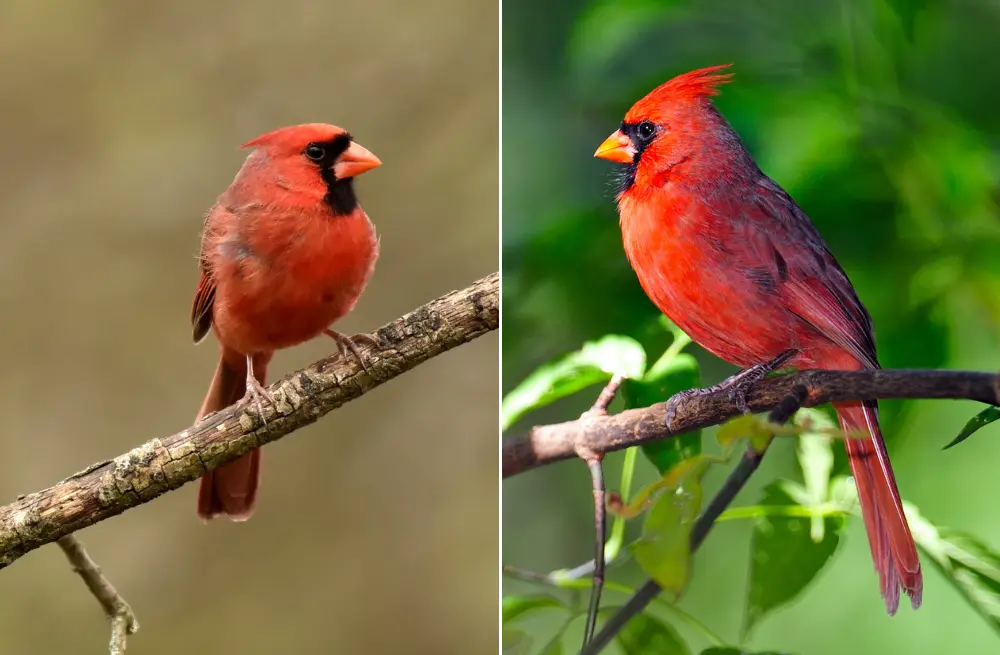Blue is indeed a captivating color that holds a special place in our hearts, reminding us of the vastness and tranquility of the sea. Its soothing and calming nature can instantly uplift our spirits.
While blue birds may not be as commonly seen in North America, their presence is truly mesmerizing and captivating when we do come across them.
In this article, we have carefully selected our top 21 favorite types of blue birds, each showcasing its own distinct beauty and charm.
Let’s get to know them!
The Blue birds Species Mentioned in this list
- Eastern Bluebird (Sialia sialis)
- Western Bluebird (Sialia mexicana)
- Mountain Bluebird (Sialia currucoides)
- Indigo Bunting (Passerina cyanea)
- Blue Grosbeak (Passerina caerulea)
- Lazuli Bunting (Passerina amoena)
- Blue-capped Cordon-bleu (Uraeginthus cyanocephalus)
- Blue Rock Thrush (Monticola solitarius)
- Blue Tit (Cyanistes caeruleus)
- Blue Waxbill (Uraeginthus angolensis)
- Blue-faced Honeyeater (Entomyzon cyanotis)
- The Little Blue Heron (Egretta caerulea)
- Blue-winged Warbler (Vermivora cyanoptera)
- Blue-and-yellow Macaw (Ara ararauna)
- Blue-crowned Motmot (Momotus momota)
- Hyacinth Macaw (Anodorhynchus hyacinthinus)
- Blue-cheeked Bee-eater (Merops persicus)
- Blue-throated Hummingbird (Lampornis clemenciae)
- Blue-headed Vireo (Vireo solitarius)
- Blue-bellied Roller (Coracias cyanogaster)
- Blue-naped Parrot (Tanygnathus lucionensis)
21 Types of Blue birds
Blue-and-yellow Macaw (Ara ararauna)
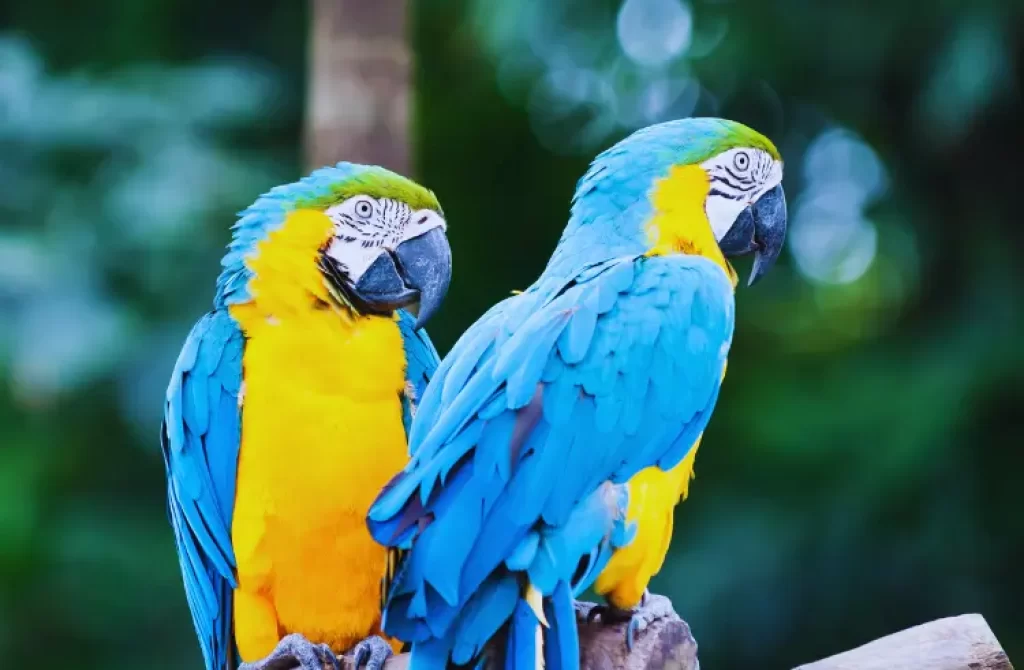
The Blue-and-yellow Macaw is one of the most striking and recognizable parrot species in the world.
Native to South America, it sports a vibrant plumage featuring bright blue feathers on its upperparts, yellow underparts, and a green forehead.
These large macaws are highly social and often seen flying in pairs or small flocks. Known for their loud and raucous calls, they use their powerful beaks to crack open nuts and seeds.
Unfortunately, the Blue-and-yellow Macaw faces threats such as habitat loss and illegal trapping for the pet trade. Conservation efforts focus on protecting their habitats and implementing sustainable practices to ensure their long-term survival.
Blue-crowned Motmot (Momotus momota)
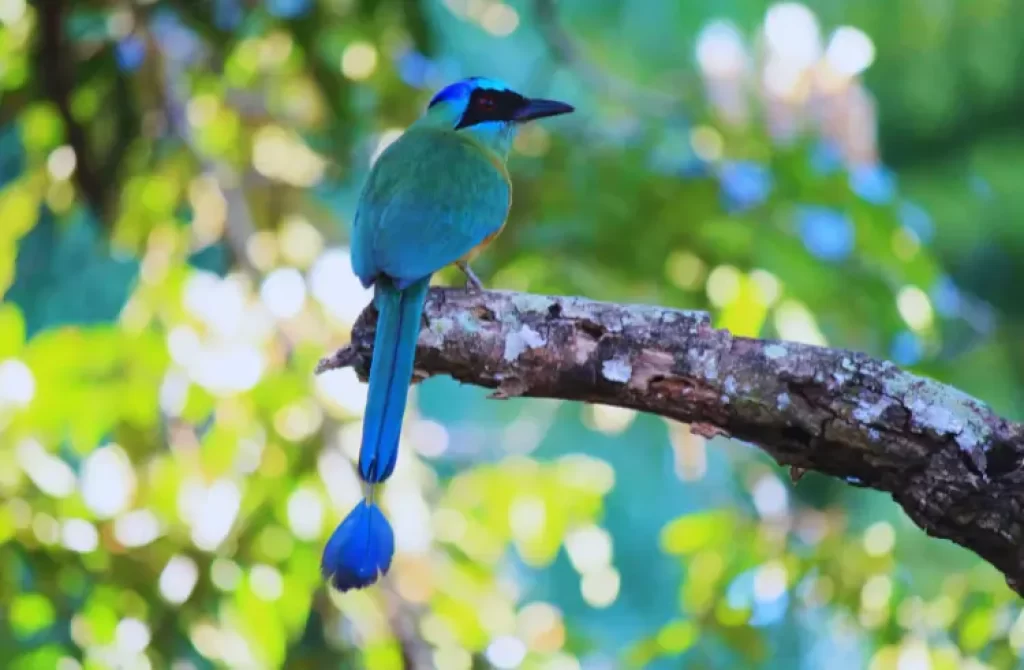
The Blue-crowned Motmot is a medium-sized bird found in Central and South America. Its striking plumage consists of a green body, a blue crown, and a long, racket-shaped tail with distinct blue and black markings. Blue-crowned Motmots are known for their distinctive call, which sounds like a series of deep, resonant hoots.
They inhabit forests and woodlands, where they perch on branches to spot prey such as insects, lizards, and small snakes.
These birds play an important role in seed dispersal as they consume fruits and excrete the seeds in different locations.
Mountain Bluebird (Sialia currucoides)
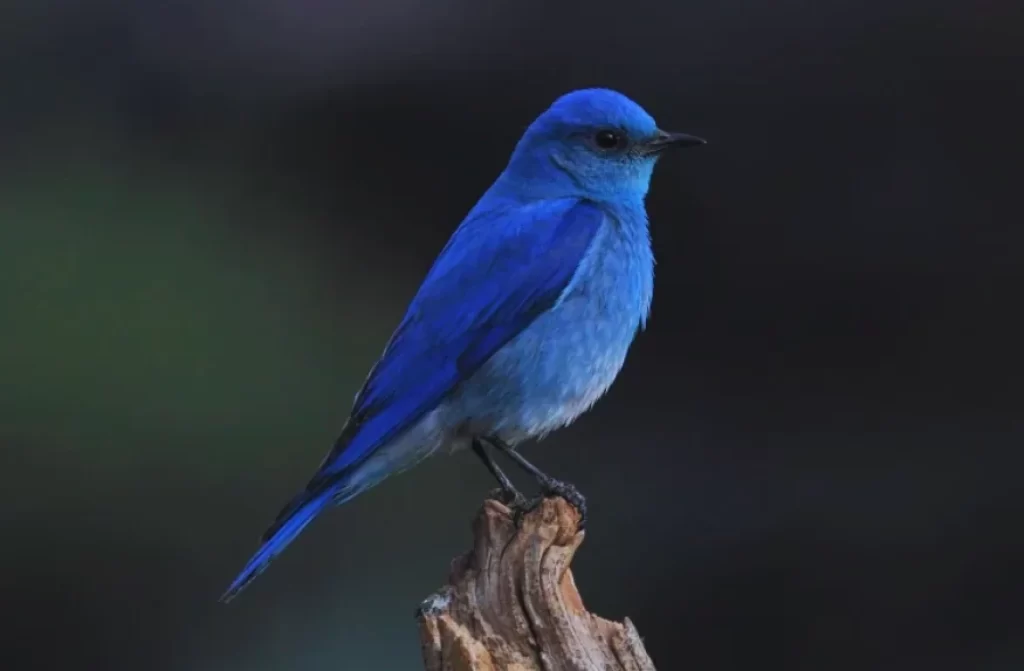
The Mountain Bluebird (Sialia currucoides) is a striking and iconic bird that graces the skies of North America. With its vibrant blue plumage and gentle demeanor, it is a sight to behold. This medium-sized songbird belongs to the thrush family and is known for its stunning azure-blue coloration, which is more vivid in males than females.
Found predominantly in the western regions of North America, the Mountain Bluebird inhabits open grasslands, meadows, and mountainous areas. It is often seen perched on fences, wires, or tree branches, showcasing its vibrant blue feathers against the backdrop of the natural landscape.
In terms of physical appearance, the Mountain Bluebird has a slim body, a short tail, and a small bill. Its wings are long and pointed, enabling it to fly swiftly and gracefully through the air. The male displays a deep sky-blue plumage on its head, back, and wings, while its throat and breast exhibit a contrasting white color. The female, although less colorful, still possesses an elegant and subtle blue hue with a pale orange-brown breast.
These beautiful birds are known for their melodious and sweet songs, which are a delight to the ears of bird enthusiasts. Their diet primarily consists of insects, spiders, and berries, making them beneficial to the ecosystem as natural pest controllers and seed dispersers.
During the breeding season, which typically begins in late spring, the Mountain Bluebird constructs nests in tree cavities or man-made nest boxes. The female lays a clutch of four to eight pale blue eggs and diligently incubates them until they hatch. Both parents participate in the care and feeding of the chicks, ensuring their growth and survival.
While the Mountain Bluebird population is generally stable, habitat loss and competition for nesting sites pose ongoing challenges. Conservation efforts, such as providing nest boxes and protecting open habitats, have been instrumental in supporting their numbers.
Encountering a Mountain Bluebird in its natural habitat is a true privilege, as it allows us to appreciate the beauty and grace of these marvelous birds. Their vivid blue plumage serves as a reminder of the wonders of nature and the importance of preserving our natural environments for generations to come.
Indigo Bunting (Passerina cyanea)
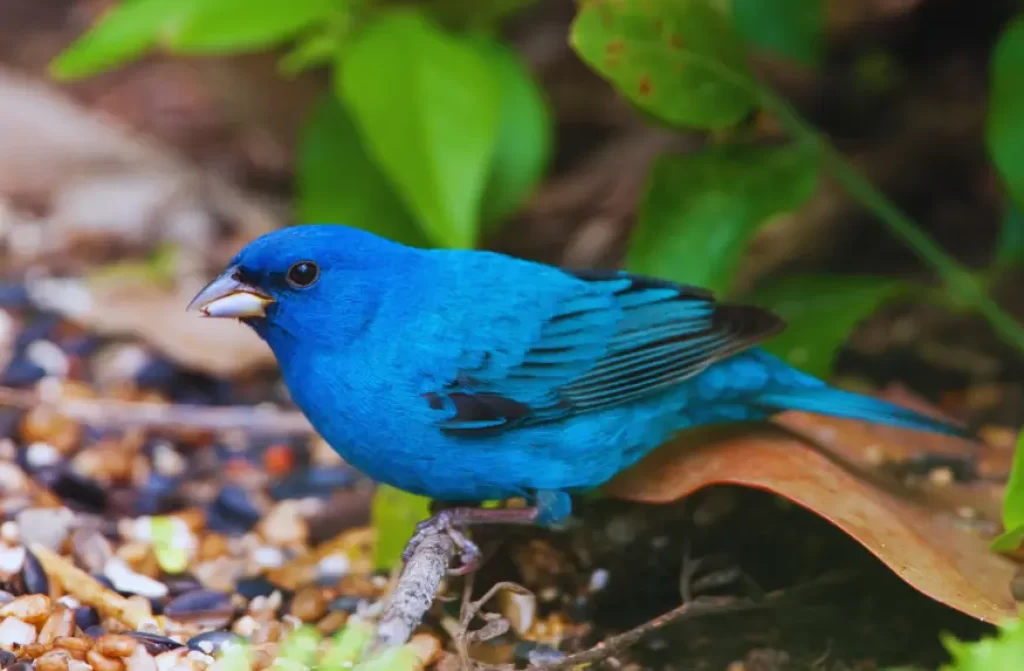
The Indigo Bunting (Passerina cyanea) is a small and vibrant songbird that brings a burst of brilliant blue to the landscapes of North America. Its name perfectly describes its stunning appearance, as it showcases a rich indigo-blue plumage that is truly captivating.
These beautiful birds can be found across eastern and central parts of North America, particularly in open habitats such as meadows, fields, and woodland edges. They are known for their preference for brushy areas with scattered trees where they can find both food and cover.
The male Indigo Bunting is a vision of iridescent blue, with its entire body covered in a deep, striking indigo hue. Its wings and tail display darker blue-black feathers that provide a lovely contrast. In contrast, the female is more subdued in color, featuring a mixture of light brown and pale blue feathers.
During the breeding season, male Indigo Buntings sing their melodious songs from perches in an effort to attract mates and establish territories. Their songs are a cheerful medley of diverse notes, filled with energy and enthusiasm. The females, although not as vividly colored as the males, still possess a charm of their own.
Indigo Buntings primarily feed on seeds, insects, and berries, and their diet may vary depending on the season and availability of food sources. They are adept foragers and can be seen hopping among vegetation in search of their next meal.
Blue-cheeked Bee-eater (Merops persicus)
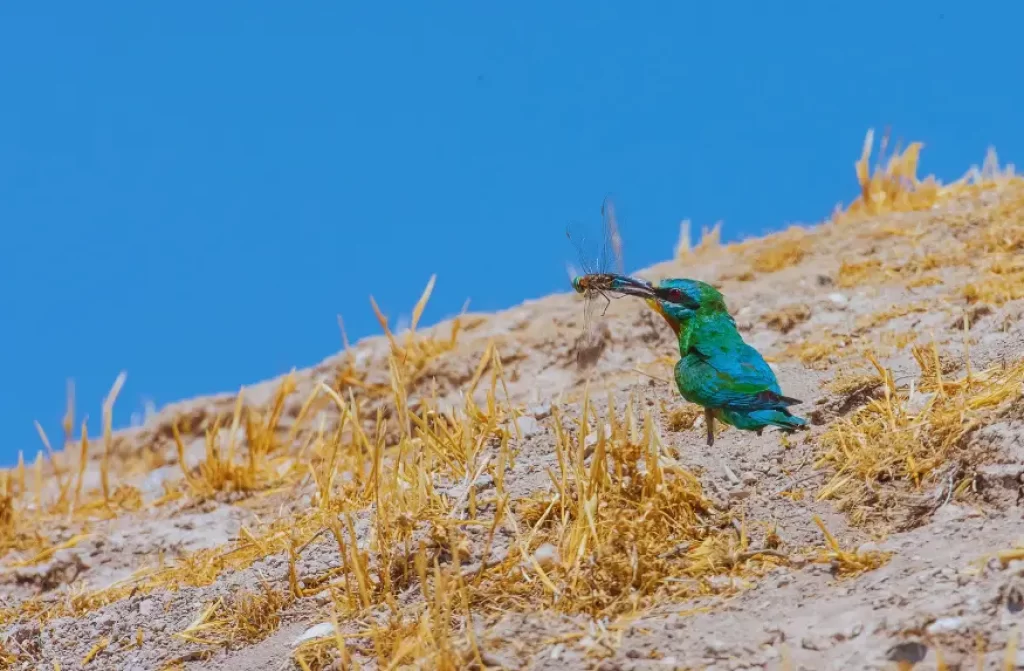
The Blue-cheeked Bee-eater is a stunning bird species found in parts of Europe, Asia, and Africa. It features a predominantly green body with vibrant blue cheeks and a long, slender beak specialized for catching flying insects, especially bees and wasps.
These bee-eaters are known for their remarkable aerial acrobatics as they swiftly dart through the air, catching their prey on the wing.
Blue-cheeked Bee-eaters often gather in colonies, excavating tunnels in sandy banks where they build their nests.
They play a beneficial role in controlling insect populations and contribute to pollination by consuming large numbers of bees and other pollinators. However, habitat loss and degradation, along with climate change, pose threats to their populations, highlighting the need for conservation measures to protect their habitats and ensure their survival.
Blue-throated Hummingbird (Lampornis clemenciae)
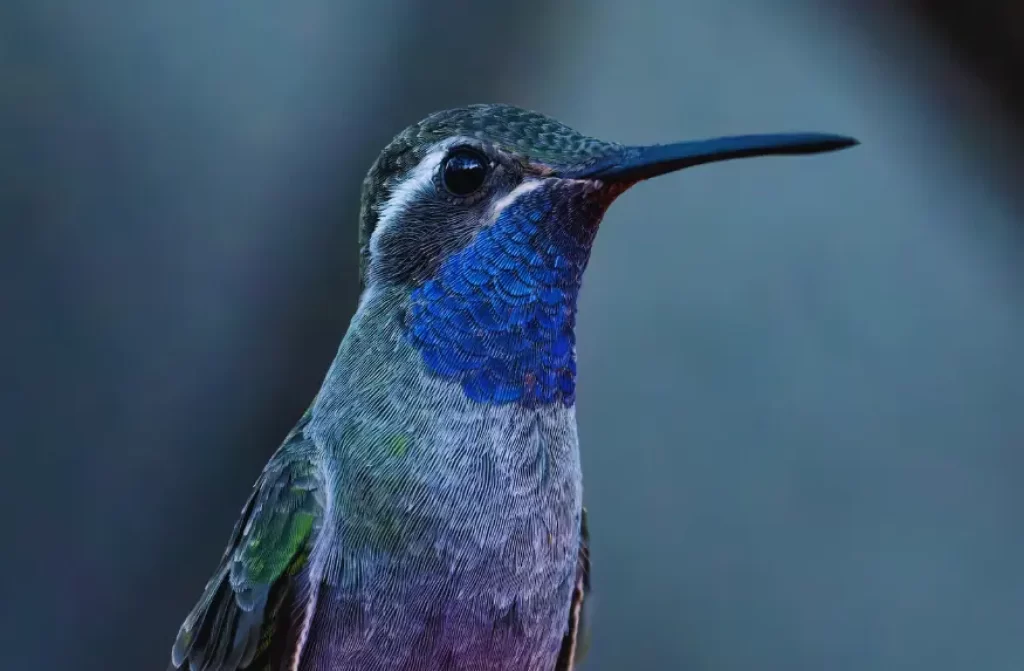
The Blue-throated Hummingbird is a small and enchanting hummingbird species found in Mexico and parts of Central America.
The male displays a shimmering emerald-green body with a brilliant blue throat patch that contrasts with its white underparts. The female has a more subdued coloration, featuring greenish-gray feathers with pale underparts.
Blue-throated Hummingbirds are known for their agility and incredible hovering abilities, enabling them to extract nectar from flowers with their long, slender bills.
They also consume small insects and spiders as an additional source of nutrition. These hummingbirds play a vital role in pollination, transferring pollen from one flower to another as they feed.
Blue Jay (Cyanocitta cristata)
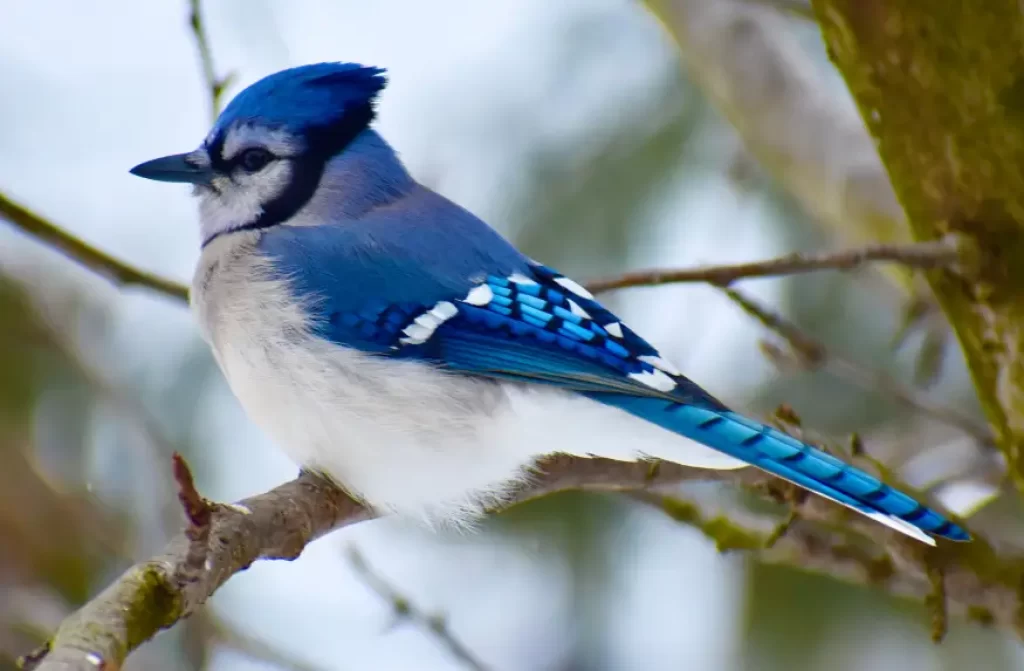
The Blue Jay is a striking and charismatic bird that is native to North America. Known for its bold blue feathers, white face, and distinctive crest, the Blue Jay is easily recognizable and a frequent visitor to backyards and woodlands.
With its vibrant blue plumage on the upper parts of its body and a combination of white and black markings, the Blue Jay stands out in any setting. Its striking appearance is complemented by a prominent crest on its head that it can raise or lower depending on its mood or level of excitement.
Blue Jays are highly intelligent and vocal birds, often making a range of loud and varied calls that include distinct cries, calls, and even imitations of other bird species. Their vocalizations serve various purposes, including communication within their social groups and issuing alarm calls to warn other birds of potential threats.
These birds are also known for their curious and inquisitive nature. They are skilled foragers and will readily visit bird feeders, where they may indulge in a variety of seeds, nuts, insects, and even small fruits. Blue Jays are also known to hoard food by burying it for future consumption, contributing to the dispersal of tree seeds and playing a role in forest regeneration.
Blue Jays are adaptable and can be found in various habitats, including forests, woodlands, parks, and suburban areas. They have a wide distribution across eastern and central North America, ranging from Canada to the Gulf Coast of the United States.
Eastern Bluebird (Sialia sialis)
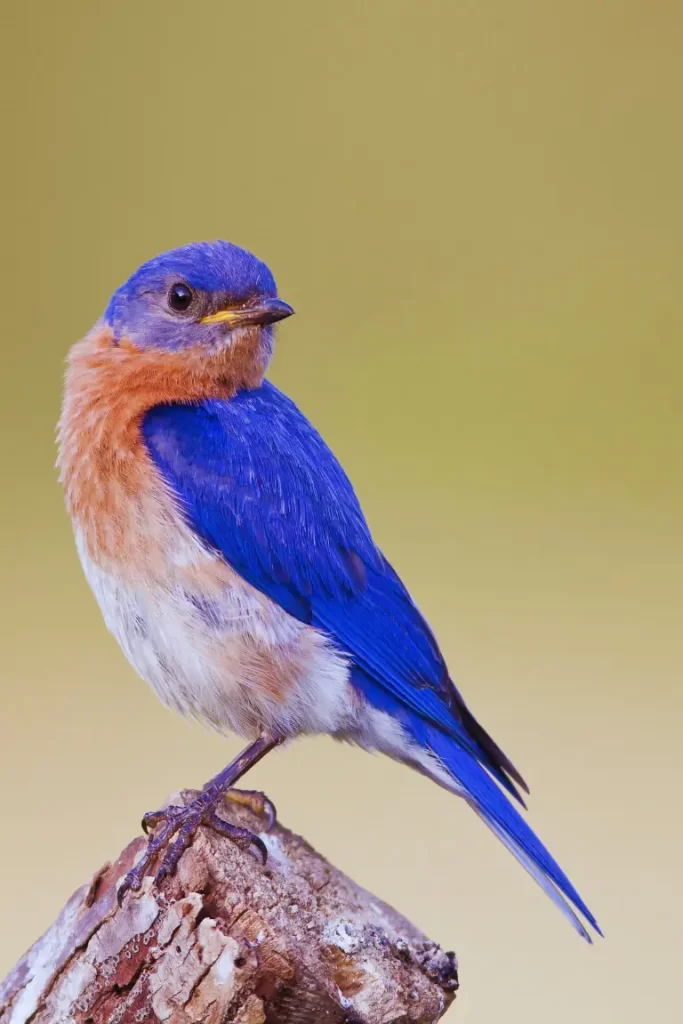
The Eastern Bluebird is a small thrush species found in eastern North America. The males have bright blue upperparts and a rusty-orange breast, while the females have a more muted coloration.
Eastern Bluebirds are cavity nesters and can often be spotted perching on fence posts, wires, or tree branches as they search for insects and berries. Their cheerful song and gentle nature make them a favorite among birdwatchers.
Western Bluebird (Sialia mexicana)
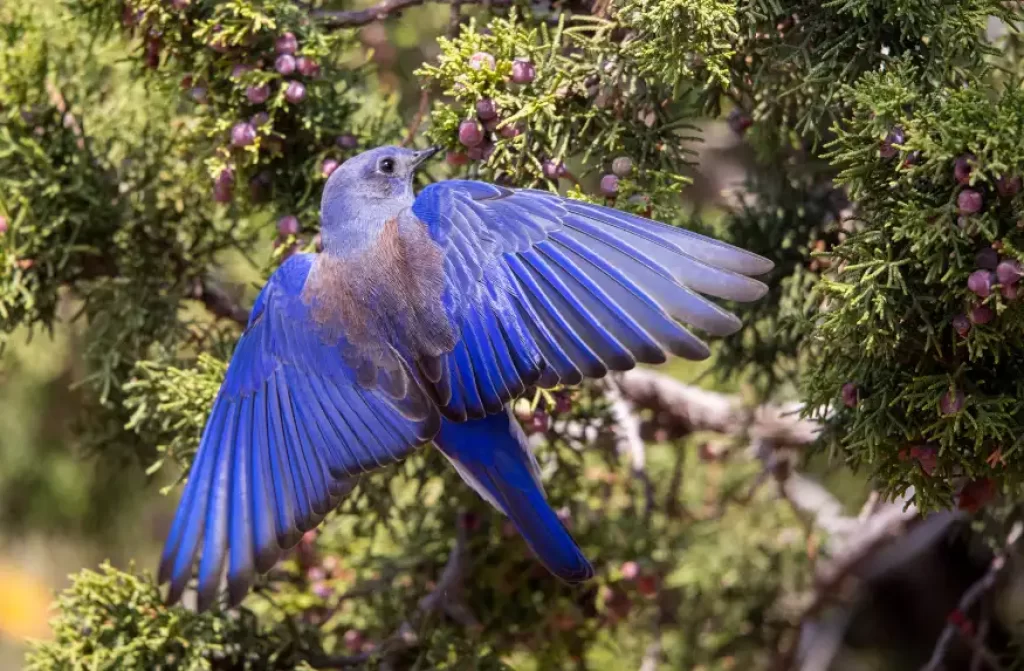
The Western Bluebird (Sialia mexicana) is a beautiful bird native to western parts of North America. It is known for its stunning blue plumage, rusty-orange breast, and white belly. Western Bluebirds prefer open woodlands, meadows, and grasslands as their habitat.
They are cavity nesters and often make use of natural tree cavities or nest boxes. These birds primarily feed on insects and berries, and their diet may vary depending on the season.
Western Bluebirds are known for their melodious songs and are a delight to watch with their graceful flight and vibrant colors. They play an important role in controlling insect populations and are cherished by birdwatchers and nature enthusiasts.
Tree Swallow (Tachycineta bicolor)
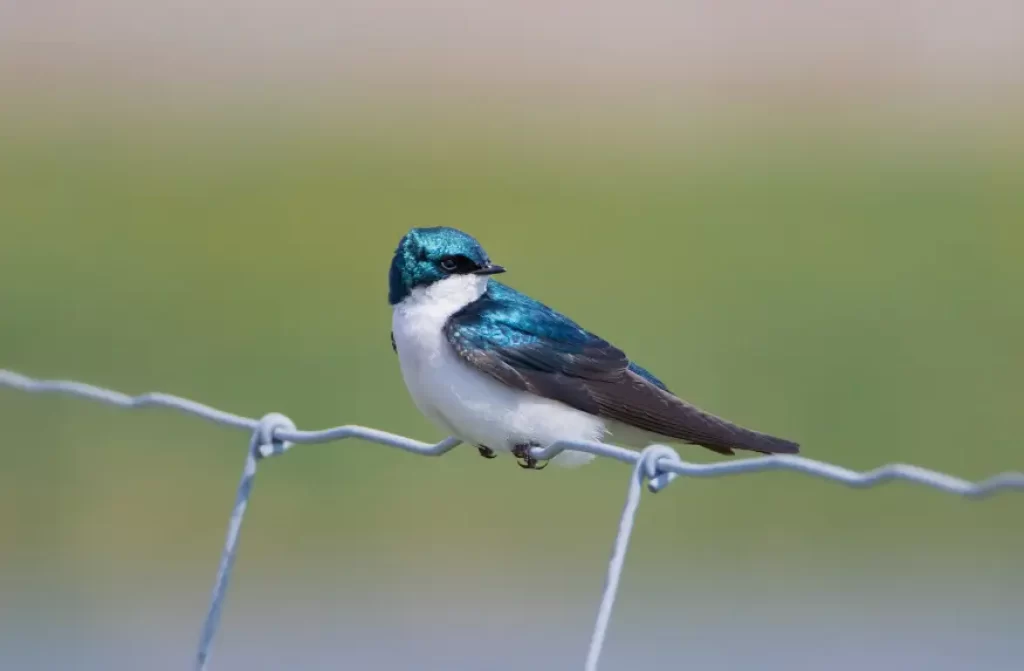
The Tree Swallow is a small migratory bird found across North America. It is known for its iridescent blue-green plumage on the upperparts and clean white underparts. Tree Swallows are agile flyers, with sleek bodies and long, pointed wings that enable them to perform impressive aerial maneuvers.
They are cavity-nesting birds and commonly build their nests in tree cavities, birdhouses, or even nest boxes specifically designed for them.
These birds have a diverse diet that includes insects, berries, and seeds. Tree Swallows are highly social and often form large flocks, particularly during migration. Their melodious songs and acrobatic flights make them a favorite among birdwatchers.
Hyacinth Macaw (Anodorhynchus hyacinthinus)
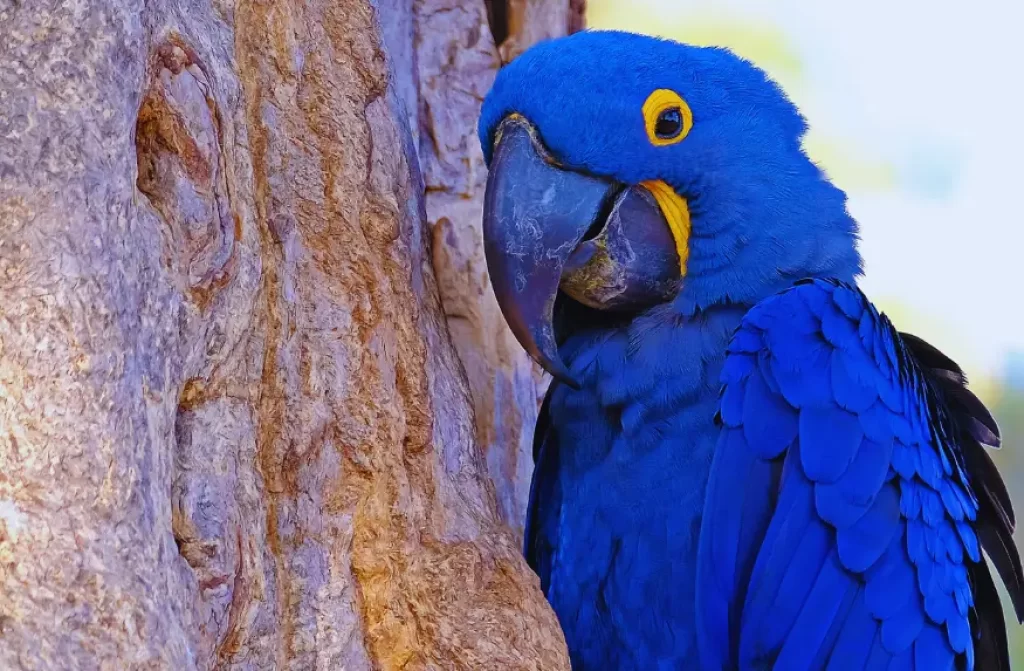
The Hyacinth Macaw is a magnificent and iconic bird native to the forests of South America, particularly Brazil, Bolivia, and Paraguay. It is the largest species of macaw and one of the largest flying parrots in the world. Known for its stunning cobalt blue feathers, the Hyacinth Macaw is truly a sight to behold.
These birds inhabit tropical rainforests and palm swamps, where they form strong social bonds and live in small groups or pairs. They have a strong beak that allows them to crack open hard nuts and seeds, which make up a significant part of their diet. Additionally, they feed on fruits, berries, and even the bark of certain trees.
Breeding pairs of Hyacinth Macaws are monogamous and will stay together for life. They create their nests in tree cavities, where the female lays two to three eggs. Both parents take turns incubating the eggs and caring for the chicks once they hatch.
Unfortunately, the Hyacinth Macaw is listed as endangered due to habitat loss and illegal pet trade. Conservation efforts are underway to protect their habitats and prevent further decline in their population. These majestic birds serve as a symbol of the importance of preserving our natural ecosystems and the incredible biodiversity they contain.
Blue Grosbeak (Passerina caerulea)
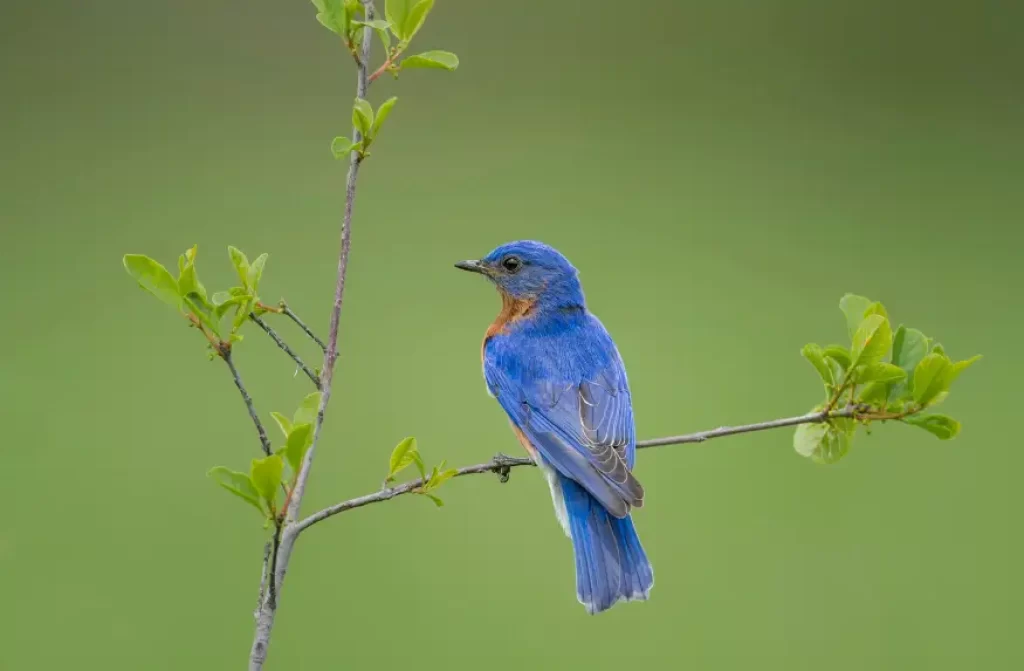
The Blue Grosbeak is a medium-sized songbird with a vibrant blue plumage and a stout beak. It is found in North and Central America.
The male has deep blue plumage, while the female is brown with streaks of blue. Blue Grosbeaks are known for their rich and varied song, often heard from perches in shrubs or trees. They inhabit grasslands, open woodlands, and brushy areas where they feed on seeds, insects, and fruits.
Lazuli Bunting (Passerina amoena)
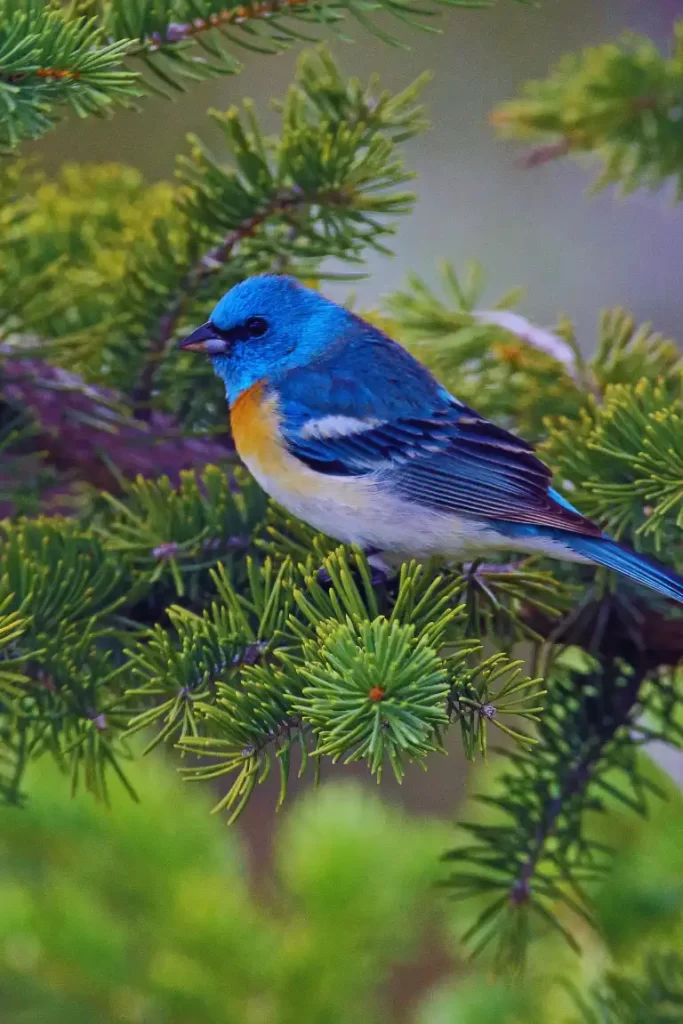
The Lazuli Bunting (Passerina amoena) is a small songbird found in western North America. The male Lazuli Bunting has vibrant blue plumage on its head, back, and throat, while the female has a more subtle brownish plumage with a bluish tinge. They inhabit open woodlands and grassy areas, where they sing melodious flute-like songs.
During the breeding season, the male performs courtship displays to attract a mate. They build cup-shaped nests in trees or shrubs using grasses and twigs. The female lays 3 to 5 eggs, which both parents care for until the chicks fledge.
Lazuli Buntings primarily feed on insects during the breeding season and include seeds and berries in their diet during winter. They undertake long-distance migrations, spending the breeding season in western North America and wintering in Mexico and Central America.
While not threatened, Lazuli Buntings face habitat loss from human activities. Conservation efforts to protect their habitats are crucial for their survival. These beautiful birds bring a touch of blue brilliance to the natural landscapes they inhabit, making them a delight to observe and cherish.
Blue-capped Cordon-bleu (Uraeginthus cyanocephalus)
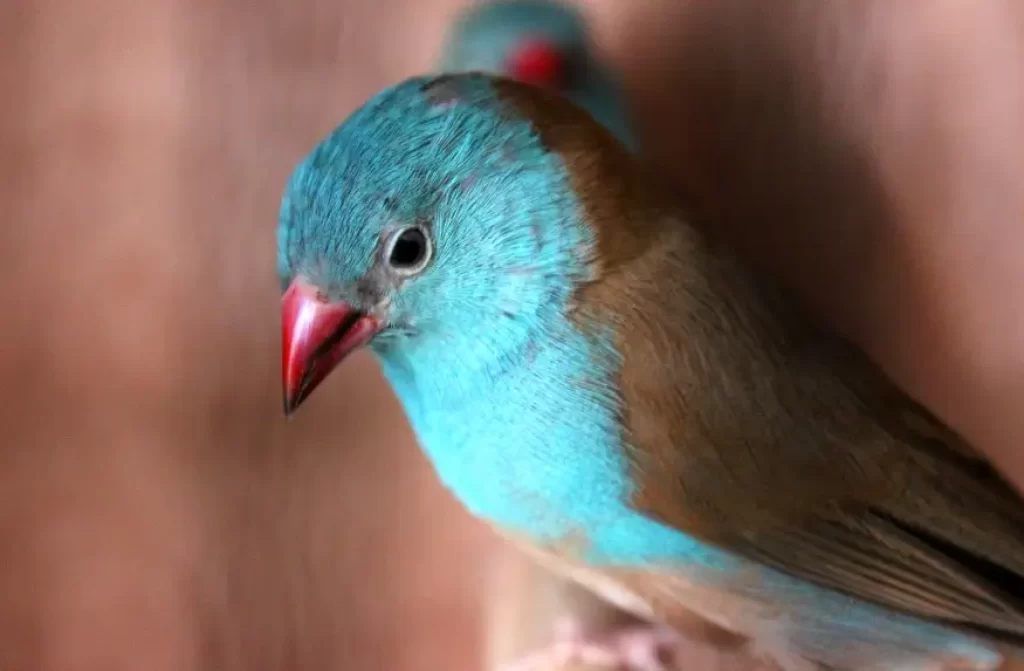
The Blue-capped Cordon-bleu is a small finch species native to sub-Saharan Africa. It has a striking appearance with a bright blue cap and upperparts, contrasting with its white underparts. Blue-capped Cordon-bleus are social birds that form small flocks and are often seen foraging on the ground for grass seeds and insects.
They are popular among bird enthusiasts for their beautiful plumage and entertaining courtship displays.
Blue Rock Thrush (Monticola solitarius)
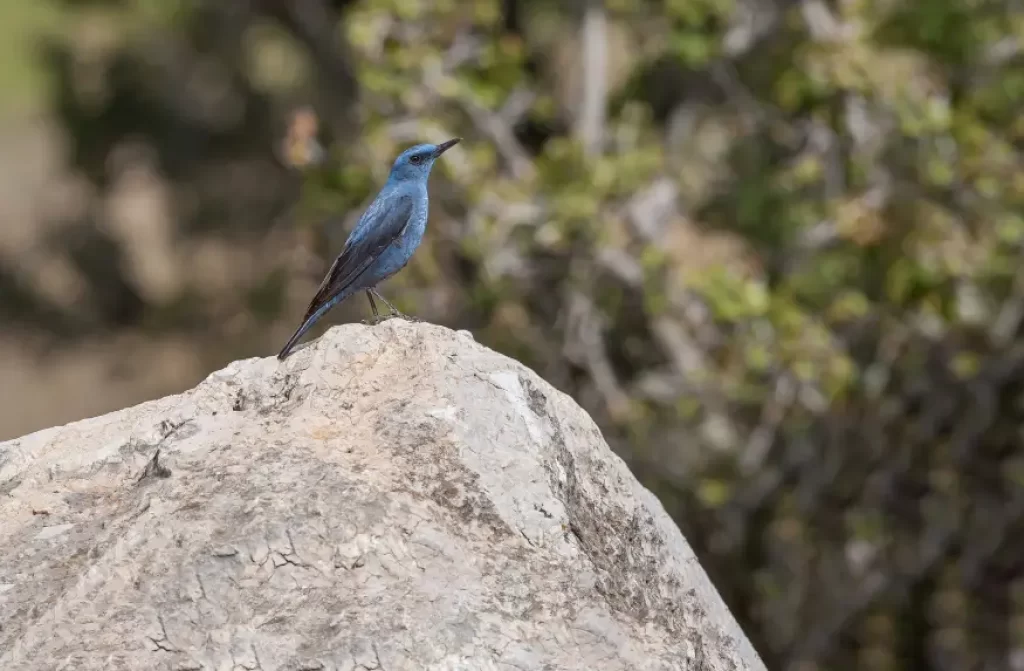
The Blue Rock Thrush is a medium-sized songbird that breeds in rocky areas and cliffs across Europe, North Africa, and parts of Asia.
The male has a vibrant blue plumage, while the female is brown with a bluish tinge. Blue Rock Thrushes are known for their ability to perch on rocks and scan their surroundings for prey, which primarily includes insects, earthworms, and small reptiles. Their melodious song can often be heard echoing through mountainous regions.
Blue Tit (Cyanistes caeruleus)
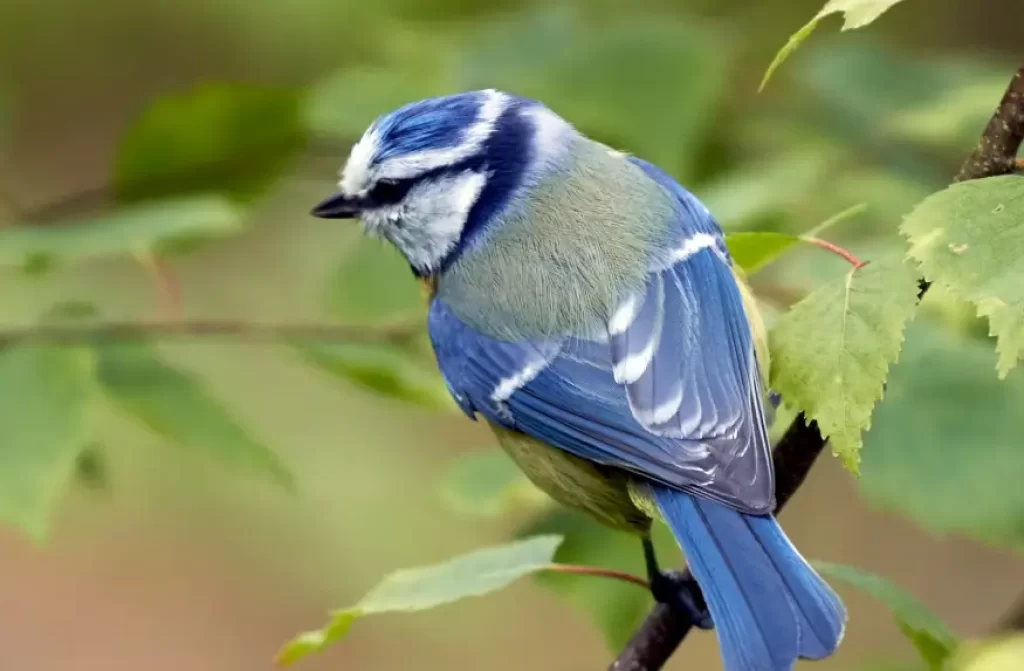
The Blue Tit is a small passerine bird found throughout Europe and parts of Asia. It is known for its vibrant blue and yellow plumage, with a blue cap on its head. Blue Tits are highly adaptable and can be found in various habitats, including woodlands, parks, and gardens.
They are agile and acrobatic birds that feed on insects, seeds, and nuts. Their cheerful and tinkling song is a familiar sound in many European gardens.
Blue-headed Vireo (Vireo solitarius)
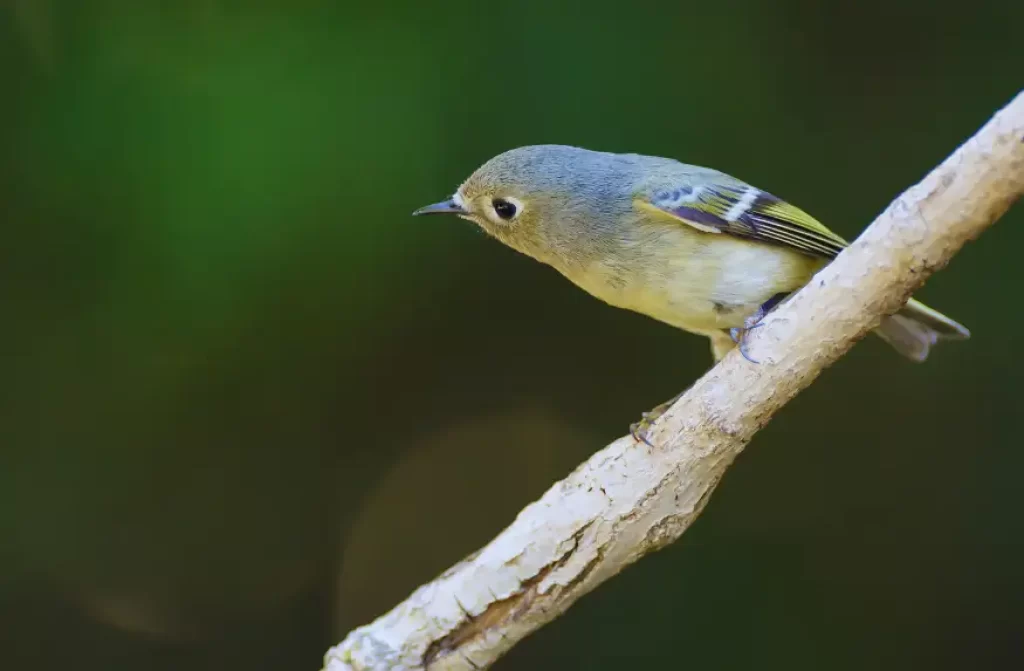
The Blue-headed Vireo is a small migratory songbird found in North America. It has a distinctive blue-gray head and back, with a white throat and underparts.
Known for its melodious song, the Blue-headed Vireo can be found in coniferous forests during the breeding season. It feeds on insects, spiders, and small fruits.
During migration, these birds can cover long distances, making their way to wintering grounds in Central and South America.
Little Blue Heron (Egretta caerulea)
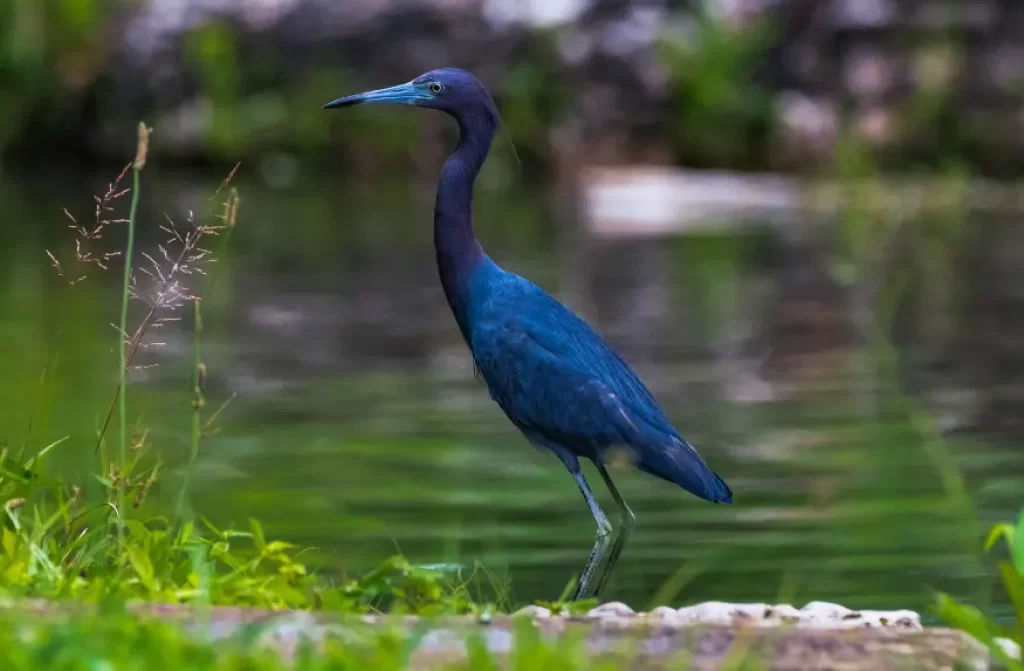
The Little Blue Heron is a striking wading bird found in the wetlands and coastal areas of the Americas. Despite its name, this heron is not always blue and goes through different plumage phases as it matures.
During its first year, the Little Blue Heron has a predominantly white plumage with some grayish-blue feathers on its wings. As it grows older, it gradually transitions to a beautiful deep blue coloration. The adult Little Blue Heron has a slate-blue body with a darker blue head and neck.
These herons are skilled hunters and primarily feed on small fish, frogs, crustaceans, and insects. They can often be seen patiently stalking their prey in shallow waters or standing still on the water’s edge, waiting for an opportunity to strike.
Little Blue Herons typically nest in colonies, often alongside other heron species. They build their nests in trees, usually near water bodies. The female lays a clutch of three to five pale blue eggs, and both parents take turns incubating them.
Blue-bellied Roller (Coracias cyanogaster)
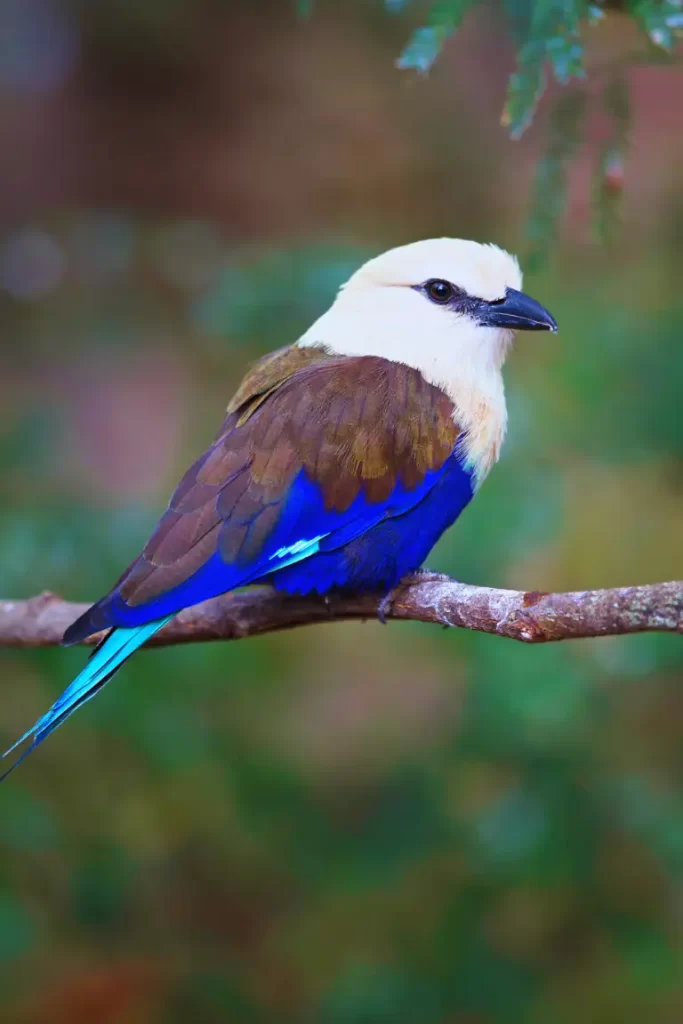
The Blue-bellied Roller is a stunning bird species native to sub-Saharan Africa. It features a vibrant blue belly, greenish-blue wings, and a reddish-brown back.
This roller species is known for its acrobatic flight displays, where it performs impressive aerial somersaults.
Blue-bellied Rollers primarily feed on insects, catching them in mid-air or foraging on the ground. They inhabit savannas, woodlands, and forest edges, and their distinctive calls can be heard during the breeding season.
Blue-naped Parrot (Tanygnathus lucionensis)
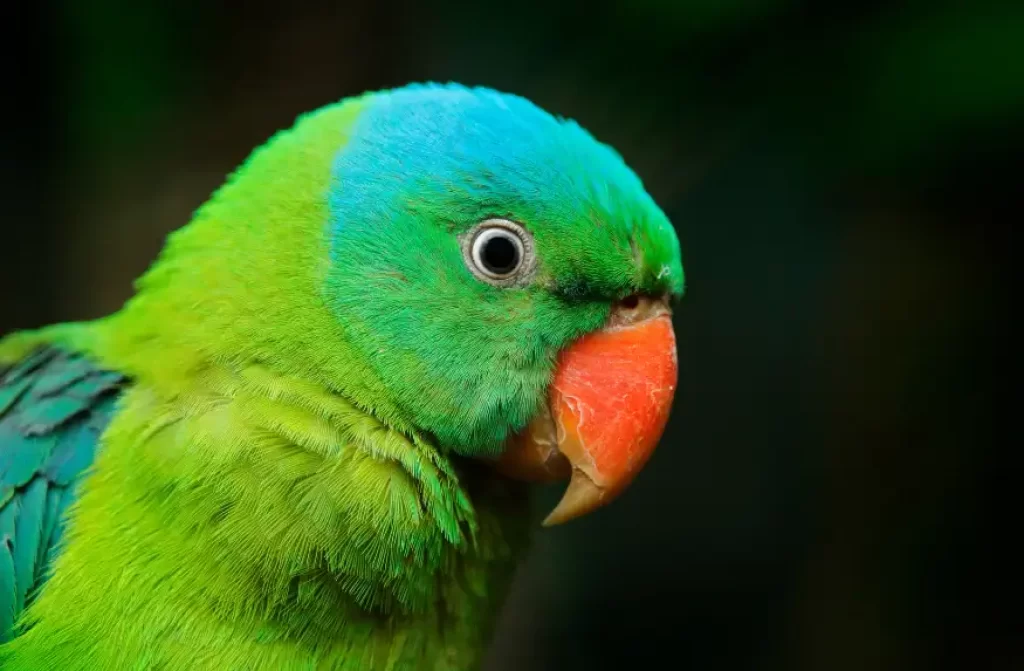
The Blue-naped Parrot, also known as the Blue-crowned Hanging Parrot, is a colorful parrot species found in Southeast Asia. It has a green plumage, a blue crown and nape, and a red patch on its abdomen.
These parrots are known for their ability to hang upside down while feeding on fruits, seeds, and nectar. They inhabit forests, mangroves, and plantations.
The Blue-naped Parrot is known for its social nature and can often be seen in flocks, engaging in playful behaviors and vocalizing with a variety of calls.
Blue-faced Honeyeater (Entomyzon cyanotis)
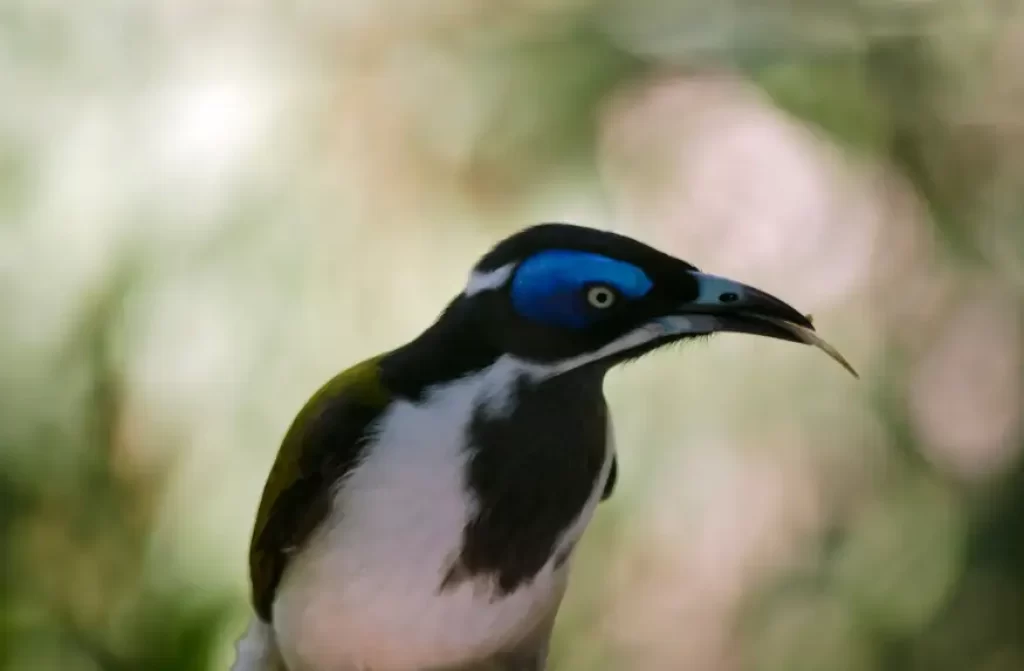
The Blue-faced Honeyeater is a striking bird species native to Australia. It has a distinctively bright blue face and throat, with a black crown and upperparts.
These honeyeaters feed on nectar, insects, and fruits. They play an essential role in pollination as they visit flowers to extract nectar using their specialized brush-tipped tongues.
Blue-faced Honeyeaters are highly vocal and produce a variety of calls, including melodious songs and sharp alarm calls. They are commonly found in a range of habitats, including woodlands, coastal areas, and gardens.
Blue Waxbill (Uraeginthus angolensis)
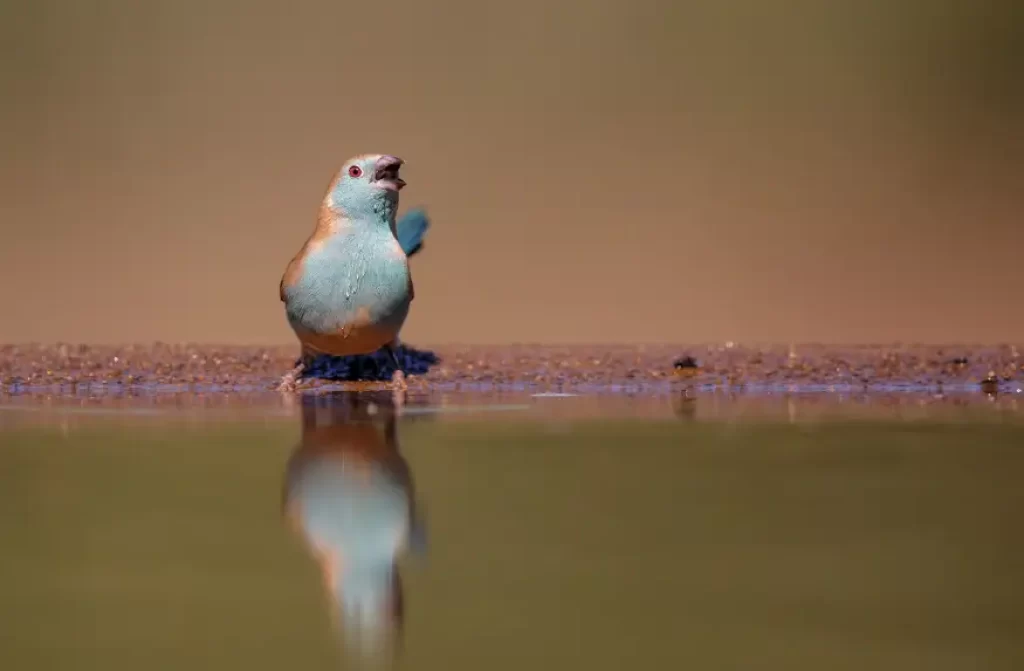
The Blue Waxbill is a small finch species native to sub-Saharan Africa. It has a striking combination of blue upperparts, a red bill, and a chestnut-colored belly. These birds are known for their acrobatic flight and lively nature.
Blue Waxbills primarily feed on grass seeds, insects, and small fruits. They often form small flocks and can be found in grasslands, savannas, and scrublands. Their soft, melodious calls add to the charming presence of these beautiful finches.
Conclusion
Thank you for exploring our list of 21+ beautiful blue birds! These fascinating creatures truly captivate us with their stunning blue plumage. Among them, the Hyacinth Macaw holds a special place in my heart, reminding me of the iconic movie “RIO.” Each of these birds has its own unique charm and allure.
We hope you enjoyed discovering these magnificent blue birds and learning about their remarkable features. If you’re eager to delve deeper into the wonders of nature, be sure to explore our other articles. We have a wealth of amazing content covering various bird species and other fascinating animals.
Keep exploring and connecting with the natural world around us. There’s always something awe-inspiring to discover. Until next time, take care and happy birdwatching!





